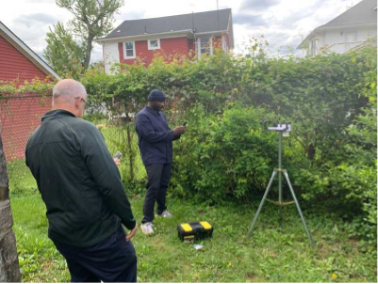Surface Weather Stations
What does a weather station do and why is it important?
A lack of surface weather measurements within cities, especially in low-income communities, means that we can’t evaluate the causes of heat islands or the effectiveness of methods to reduce heat. BSEC’s weather stations measure outdoor temperature and humidity, wind speed, wind direction, rainfall, solar radiation and UV, at the location of the station. The dew point, wind chill and heat index are calculated from the outdoor measurements. The weather stations also measure the indoor temperature, humidity and barometric pressure at the location of the console. (Read a deeper dive about weather stations.)

How does a weather station make measurements?
Wind cups measure the speed of the wind by how rapidly they rotate, while the vane records the direction of the wind. The station is always positioned so it’s pointing north. Rainfall is recorded via a small “spoon” inside the funnel (“tipping bucket”). This spoon tips everytime it fills up, and each tip then corresponds to a certain amount of rainfall (0.02 mm). Total rainfall in a given time period is determined by the number of tips within that time. To access the BSEC weather station data, read this “how to” document.
Surface weather station instruments and what they measure:
| Instrument | What It Measures |
| Wind vane | Direction wind is blowing |
| Wind cups | Speed of the wind |
| Light sensor | Amount of sunlight |
| Rain gauge | Amount of rain |
| Thermometer – hydrometer | Temperature and moisture in the air |
| Solar panel | Produces energy for instruments |
Where are BSEC surface weather stations located?
BSEC has 21 weather stations deployed in Baltimore, with more coming online. The map below shows the current location of BSEC weather stations and existing state and federal weather stations in Baltimore.





